Effect of the volute tongue cut on pressure pulsations of a low specific speed centrifugal pump *
Ning Zhang, Bo Gao, Bin Xia, Qi-feng Jiang
1. School of Energy and Power Engineering, Jiangsu University, Zhenjiang 212013, China
2. School of Mechanical Technology, Wuxi Institute of Technology, Wuxi 214121, China
3. Key Laboratory of Fluid and Power Machinery, Ministry of Education, Xihua University, Chengdu 610039,China
Abstract: The volute tongue, as the crucial component inducing rotor-stator interaction, is detrimental to unsteady pressure pulsations of centrifugal pumps. In the present paper, to investigate the effect of the volute tongue cut on pressure pulsations of a low specific speed centrifugal pump, three volute tongues are obtained through twice cuts, named cases 1, 2, 3. Twenty measuring points are evenly mounted on periphery of the volute casing to obtain unsteady pressure signals using high response transducers. Pressure amplitudes at the blade passing frequency f BPF and root mean square (rms) values in 0 Hz-500 Hz frequency band are applied to evaluate the cutting effect. Results show that pressure spectrum is significantly affected by the volute tongue cut, especially for the component at f BPF. For different measuring points, influences of the volute tongue cut on three cases are not identical. From rms values, it is evident that cutting the volute tongue will lead to pressure energy increasing for most of the concerned measuring points, especially for the points at the far away region from the volute tongue. Finally, from comparison with the original shape case 1, the averaged increment of the twenty points is more than 20%. So it is concluded that for this type centrifugal pump, cutting the volute tongue is not reasonable considering low pressure pulsation requirement.
Key words: Centrifugal pump, volute tongue cut, pressure pulsation, spectrum analysis
Introduction
Pressure pulsation in the centrifugal pump,mainly resulted from the intense rotor-stator interaction between the impeller and volute, is vital to the stable operation, noise and vibration of the pump[1].When the impeller periodically sweeps the volute tongue, the non-uniform fluid discharged from the impeller will interact with the volute tongue. Thus,high pressure pulsations are induced[2]. So the shape and location of the volute tongue have a significant influence on pressure pulsations. For the low pressure pulsation design target, the distance between the impeller and volute tongue is usually selected much larger than the conventional recommended value[3]. It is proved that for centrifugal pumps, when the clearance ratio between the impeller and volute exceeds 10%, the effect of enlarging the clearance is not obvious[4]. Besides, the related influence on the pump performance should also be taken into account.
For centrifugal pumps, the match characteristics between the volute and impeller have a great effect on the pump performance[5]. For poor matched pump, the hydraulic losses will increase, and it leads to the best efficiency point deviating from the design point[6].From large amount statistical results, Anderson proposed the area ratio theory[7]. He thought that the pump performance is closely associated with the throat area of the volute. It is considered that the ratio between the impeller outlet area and the throat area is detrimental to the pump head, flow rate and shaft power. Yuan[8]also investigated the area ratio from theory and experimental methods and established the relation between the area ratio and pump performance.Zhu et al.[9]analyzed the influence of three different volute tongues on pressure pulsations, but pressure signals at only one measuring point were discussed.The obtained results are limited and not comprehensive. So the relevant analysis between the throat area and pressure pulsation characteristic is rarely investigated and revealed.
The final aim of pressure pulsation research is to find an effective way to predict pressure pulsation energy and alleviate it to avoid the unexpected results.Many useful methods are proposed to reduce pressure pulsations. Optimization of the volute and impeller and some special designs are mainly explored.Al-Qutub et al.[10]proved that the V-cut of impeller outlet has a positive effect on controlling pressure pulsation energy in a centrifugal pump. The splitter blade is beneficial for improving the non-uniform fluid discharged from the impeller outlet, namely the jet-wake flow pattern, so it will lead to pressure pulsation energy decreasing as proved by Shigemitsu et al.[11]. From reducing rotor-stator interaction, Zhang et al.[12-13]proposed a typical slope volute and demonstrated the effective effect on reducing pressure pulsations. Besides, the author believes that the blade trailing edge profile is crucial to the vortex shedding and its impinging effect with the volute tongue[14-15].For the proper modified blade trailing edge profile,pressure pulsation amplitude will be reduced significantly.
The objective of this paper is to investigate the influence of volute tongue cut, namely changing the throat area, on pressure pulsations of a low specific speed centrifugal pump. The volute tongue is cut twice, so three throat areas are obtained. Twenty pressure transducers are mounted on the volute casing to measure the unsteady pressure signals for the three different cases. Finally, the influences of the volute tongue cut on pressure pulsation characteristics are carried out and discussed in detail.
1. Experiment setup
In the present paper, a centrifugal pump with the two-dimensional blade is designed for investigation,and the specific speed nsis 69 as seen in Table 1.The cross section shape of the volute is rectangular,and the main design parameters of the model pump are presented in Table 1. To investigate the effect of volute tongue cut on pressure pulsations, three different volute tongues are obtained through twice cuts. Figure 1(a) shows the meridional shape of the impeller and the cross section shapes of the volute,and Fig. 1(b) presents three different volute tongue shapes and Fig. 1(c) shows the throat areas of the three cases. From cases 1 to 3, the throat area increases as seen in Table 2, and the area ratios of throat area with relative to the impeller outlet area are also presented. For cases 2, 3, the angle of volute tongue increases to 27° and 33° due to part of the volute tongue being cut. For the three pumps, the clearances δ between impeller and the volute tongue are 17.5 mm, 17.8 mm and 18.3 mm, so the clearance ratios with relative to the impeller diameter are 6.7%,6.8% and 7.0%. Usually, it is accepted that the clearance ratio is quite important to pressure pulsations of the pump, and larger clearance ratio will lead to pressure pulsation amplitude decreasing rapidly[16-17]. From comparison, it is found that the clearance ratios of three different cases are approximately the same, so the influence of clearance ratio increasing on pressure pulsation could be ignored.Finally, the changes of volute tongue area, tongue angle and radius together affect pressure pulsations of the model pump. Experiments of the pumps are conducted on a closed test rig as shown in Fig. 2, and the detailed description of the test rig could be found in our previous researches[14,18]. The test rig meets with the requirement of ISO9906:2012, and the overall uncertainties of the measured pump head and efficiency are lower than 3%.
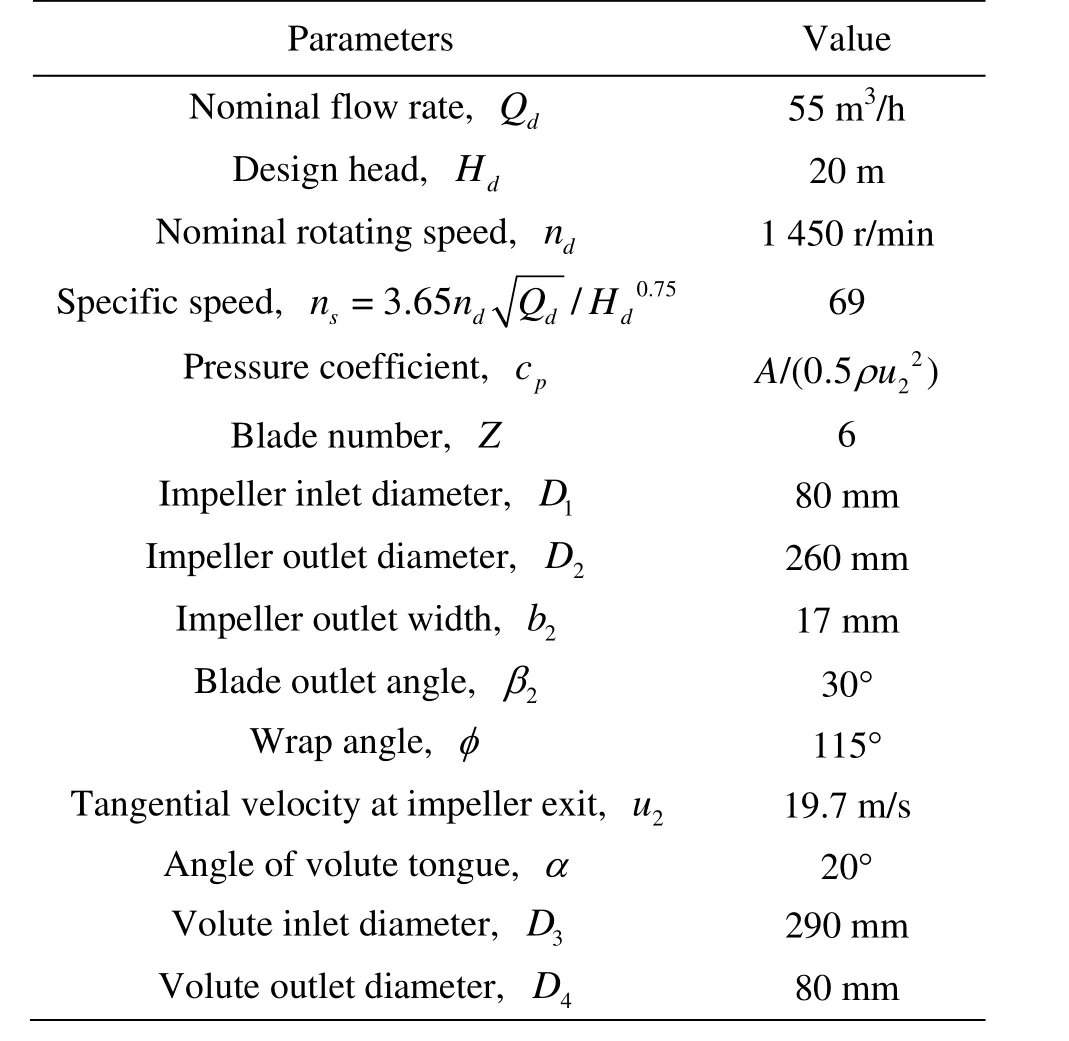
Table 1 Main design parameters of the model pump
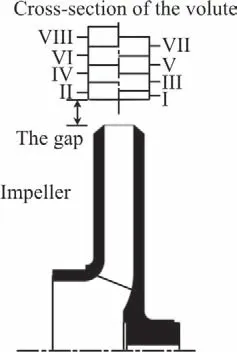
Fig. 1(a) Meridional shapes of the impeller and volute
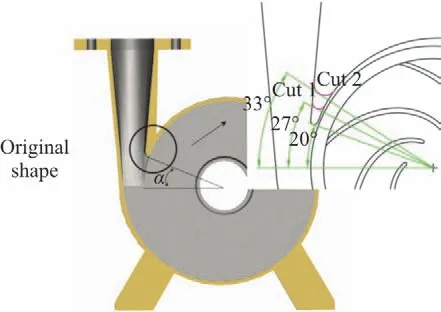
Fig.1 (b)(Color online)cases of volute tongue cut

Fig.1 (c)throat area of the volute

Fig.3 (Color online)Measuring positionsof pressure transducers
The data acquisition system with 24 channels produced by LMS company is used for pressure signals sampling.To obtain pressure signals of the pumps,twenty high response pressure transducers(PCB113B27 series)are mounted on periphery of the volute casing,and the detailed locations of the transducers are shown in Fig.3.The threaded holes are drilled on the volute to flash-mount the transducers,and the measuring diameter of the pressure transducer contacting the water is about 5.5 mm.The angle of the point P1,locating at the eighth cross section of the volute,is defined as 0°.From P1 to P20,the angle increases along the clockwise direction,so the intersection angle between two adjacent points is 18°.The pressure transducer has a high measuring accuracy,and the measuring uncertainty of pressure signal is beyond 0.2%.In our previous research,it is found that for this type pump with a rotating speed 1 450 r/min,peaks higher than 3 fBPFcould not be detected[19].It means that the maximum excited frequency is usually below 1 000 Hz.So during pressure pulsation experiments,the bandwidth is set as 10 240 Hz with a corresponding sampling frequency 20 480 Hz,and Hanning window is used for pressure spectrum treatment.The resolution of pressure spectrum is set as 0.5 Hz, so the sampling data for spectrum analysis is 40 960.Only ten pressure transducers are available during experiments,so experiments of each model pump are completed through twice measurements.
2.Results and discussions
2.1 Performance comparison of the pumps
Performances of the three pumps are compared in Fig.4.From the efficiency curve of the case 1,it is observed that the best efficiency point locates near 1.05Qdlitter higher than the nominal flow rate,and the maximum value nearly reaches 71%.The throat area of the volute increases with the volute tongue cut.From head curves of three different cases,it is evident that the volute tongue cut has little influence on the pump head especially at high flow rates.As noted,at the flow rate lower than 1.0Qd,the heads of cases 1,2 are nearly identical.As observed that the pump head of the case 3 is little lower than the original shapecase 1.At 0.5Qd,the difference between cases 1,3 is about 2%.At high flow rates,the influence of volute tongue cut on the pump head is not obvious.The pump heads for three different cases are very close.Considering the measuring error of the current test rig,it is found that cutting the volute tongue affects little of the pump head.

Table 2 Three different cases obtained for investigation
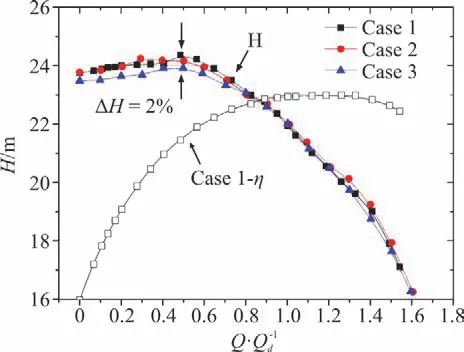
Fig.4 (Color online)Performancecomparison of the pumps
2.2 Unsteady pressure pulsationsof the pumps
For the model pump,pressure pulsation signals are extracted at flow rate of 0 Qd-1.6Qd.For dimensionless treatment,pressure amplitude A at each frequency is transformed intocpusing the following Eq.(1)[20].

where ρis the water density,u2is the tangential velocity at the impeller outlet.
Time domain pressure signals of the pumps are presented in Fig.5,and Fig.5(a)shows pressure signals at θ=0°of case 1 for three flow rates and Fig.5(b)presents pressure signals at θ= 0°of three pumps at the nominal flow rate.During the experiments,the trigger synchronized with the impeller is not used,so the position of the impeller for a given instant is not the same.Finally,the phases of pressure signals at t =0 smoment are not identical.The rotating speed of the model pump is 1 450 r/min,so the impeller rotating cycle T is 0.0417 s.In Fig.5(a),it is observed that pressure signals exhibit quasi-periodic trends characterized by the six peaks and valleys in one impeller rotating cycle for different flow rates.The pulsating characteristics are caused by rotor-stator interaction between the impeller and volute tongue.Generally,it is accepted that pressure pulsations are significantly affected by the pump operating condition,especially at off-design flow rates,and it will lead to pressure pulsation amplitude increasing due to flow impinging or separation effects within the pump.However in Fig.5(a),the difference between various flow rates is not obvious irrespective of the phases at t =0 smoment,the reason probably is related to the position of the selected point θ= 0°.Pressure distributions on the periphery of the volute are not identical,maybe for the typical position θ=0°,the influence of flow rate on pressure pulsationsisnot significant.From Fig.5(b),it isnoted that the volute tongue cut has an obvious effect on the pressure pulsation signals.Especially for the case 3,pressure pulsation amplitude is much larger than the cases 1,2.It means that increasing the throat area probably hasa negative effect on pressurepulsations.

Fig.5 Comparison of time domain pressure signals
For further analysis,time domain pressure signals are transformed into frequency domain signals to illustrate the influence of the volute tongue cut on pressure spectrum.The rotating frequency of the impeller fnis 24.2 Hz,and the blade passing frequency of the pumpfBPF=6 fnis 145 Hz.Figure 6 presents pressure spectra at point θ=36°of the pump case 1 under four flow rates,namely 0.2Qd,0.6Qd,1.0 Qdand 1.4 Qd.It is observed that discrete frequencies occur in pressure spectra locating at the blade passing frequency fBPFand the corresponding high harmonics2 fBPF,3 fBPF.For different flow rates,the components at fBPFalways achieve maximum,and it means that typical frequency at fBPFcaused by rotor-stator interaction phenomenon dominates the spectrum of this model pump. Besides,it isevident that pressure spectra show significant difference for various flow rates.As noted,at low flow rate,peak at the harmonic of fBPFcould not be captured,and only frequency at fBPFcould be detected.It means that pressure pulsation energy mainly concentrates at the blade passing frequency,and at its harmonics,components are inhibited.For high flow rate,components at the harmonic of fBPFare evident.Besides,it is noted that the flow rate also has a significant influence on amplitude at fBPF.For high flow rate 1.4Qd,the increment is about 80%compared with that at the nominal flow rate,and at 0.2Qd,the increment isabout 40%.

Fig.6 Pressure spectra at θ= 36°of the pump case1 for different flow rates
To investigate the influence of the volute tongue cut on pressure spectrum,Fig.7 presents pressure spectra at four positions of the three different pumps at the nominal flow rate.From Fig.7 it is evident that for different positions,pressurespectra are similar,but some differences still exist for the three pumps.Component at fBPFand its harmonics are captured at various conditions.However,for different positions,amplitude at fBPFshows significant difference.For case 1,amplitude at fBPFof the point θ=36°is much larger than that at other points,the increment is about 100%from comparison with θ= 0°.For case2,the increment is about 120%.Usually,it is considered that due to rotor-stator interaction effect,high turbulent intensity generates at the region after the volute tongue,and the point θ=36°just locates at the area[19].It is the reason that pressure amplitudes at fBPFachieve maximum for cases 1,2.Compared with cases 1,2, pressure spectra of case 3 at four points are quite different.As noted,except for f BPFand its harmonics,components at the impeller rotating frequency could be detected for all the four positions.Due to the occurrence of fn, part energy of pressure pulsation is occupied and redistributed at this frequency. For the concerned four points, the varying trends are not identical. For instance at θ=0°,amplitude at fBPFof case 3 is larger than that of case 1, but it shows an opposite trend at θ=36°. From comparison, it is noted that pressure amplitude at 0.6 Qdis smaller than that at 1.0 Qdfor component at fBPF. Many researches proved that pressure pulsation is mainly determined by the jet-wake flow pattern, namely non-uniform flow discharged from the impeller[21]. So, the reason is associated with the not-well matched impeller-volute, and flowstructureis more uniform and the corresponding turbulent intensity is low at the blade trailing edge. Finally,pressure amplitude reaches minimum at flow rate lower than the nominal condition. The detailed analysis for the resulted deviation could be found in our previous research[19]. So it is concluded that the effect of cutting the volute tongue on pressure spectrum is not in consistent for various measuring positions, and more analysis is needed to clarify the change rule.
From Fig. 6, it is evident that flow rate has a significant effect on pressure spectrum, so it is essential to analyze the comparison of pressure spec-trum within entire flow rate range. Figure 8 presents pressure amplitudes at fBPFof four points, namely θ=36°, θ=126°, θ=216° and θ=306°, when the pumps operate from low to high flow rates. It is clear that the varying trends are not identical and exhibit great difference for different measuring points.At point θ=36°, at flow rates higherthan0.8Qd,pressure amplitude of the pump case1achieves maximum, but it reaches minimum for the pump case 3. At the nominal flow rate, pressure amplitude of case 1 is about 2.7 times of that at case 3, so the difference is quite significant. However at flow rates lower than 0.8Qd, the varying trends change. As noted, pressure amplitude of case 3 is larger than cases 1, 2, but the discrepancy between cases 3, 1 is not obvious. For the other points, the varying trends differ from that at θ=36°. At point θ=306°, for all the concerned flow rates, pressure amplitudes of case 3 are larger than cases 1, 2. From Fig. 8, it is concludedthatthevarying trends of pressure amplitudes for various measuring points are complicated and not identical,and no general and consistent changing rule could be established for different points.

Fig. 7 Comparison of pressure spectra at four points of the three pumps at the nominal flow rate
As for pressure pulsation, dominant component always locates at the blade passing frequency, and it means that frequency at fBPFoccupies major pressure pulsation energy. However from Fig. 7, it is found that peaks at other frequencies are also captured,and part pressure energy is redistributed. So component at fBPFcould not represent the entire energy of pressure pulsations. It is probably the reason that pressure amplitudes at fBPFfor different points have no consistent changing rule due to the lack consideration of other frequencies. So the effect of the volute tongue cut on pressure pulsations should be conducted and discussed reasonably by taking into account all the frequencies occurring in pressure spectrum.
In the present paper, root mean square (rms)method is proposed to evaluate the entire pressure pulsation energy including all the components in pressure spectrum as defined in Eq. (2).

Anrepresents amplitudes at various frequencies in pressure spectrum, A0is the pressure amplitude at the initial frequency.
From signal processing theory, due to the auto-power spectrum method used during experiments,Eq. (2) is transformed into Eq. (3) considering the energy leakage of the current applied approach.


Fig. 8 (Color online) Comparison of amplitudes at fBPF for four positions under various flow rates
For dimensionless treatment,rms value is converted into dimensionlessform using Eq.(4).

In pressure spectrum,it is evident that frequency higher thanBPF3 f could not be captured,so components in 0 Hz-500 Hz frequency band are considered using rms method to evaluate the entire pulsation energy.Figure 9 presents comparison of rms*of the three cases for different flow rates,and ten measuring points are compared and discussed to provide a comprehensive understanding of the volute tongue cut effect.From comparison with results in Fig.8,it is noted that the varying trends are more regular,though not all the points obey the identical changing rule.For the measuring points away from the volute tongue>180θ °,similar changing rule could be found especially for flow rates higher than the nominal flow rate.As observed,rms*values of the case 3 are significant larger than cases 1,2 at flow rate from 1.0dQ to 1.6dQ .For case 1,2,rms*values are close to each other,and at some points=252θ °,=288θ °,they are approximately identical.The difference is not significant.At flow rates lower than 1.0dQ ,except for the typical point at θ=324°,rms*valuesof case 3 arelarger than cases1,2.So it is concluded that for the points>180θ °,cutting the volute tongue has a negative effect on pressure pulsations leading to pressure pulsation energy increasing for all the concerned flow rates.For the points from =0θ °to=180θ °,the varying trends versus flow rate are not regular and consistent.Pressure amplitudes of case1 reach minimum at flow rate lower than 1.0Qd,and cutting the volute tongue will lead to the increasing of pressure amplitude as seen at cases 2,3.However,for high flow rates larger than 1.0dQ ,the influence of cutting volute tongue is not identical for different points.At some points θ=72°,θ= 144°,pressure amplitudes reach maximum,and it shows the opposite trend at points θ=36°,θ=108°.

Fig.9 (Color online)Comparison of rms*valuesat ten measuring points under variousflow rates
From the above analysis,it is concluded that cutting the volute tongue has an influence on pressure pulsation characteristics,though the effects are not the same for different measuring points along the volute casing.In fact,cutting the volute tongue will change the volute tongue angle,volute tongue shape,and throat area,of course the radial gap between the impeller and volute tongue,though the radial gap changes little in this research.So,the influence of volute tongue cut on pressure pulsation is the combination effect of the mentioned changes.As proved,the internal flow structures will be affected by changing the volute tongue,especially for the regions around the volute tongue and within the diffuser section[22].So,the corresponding pressure pulsation is influenced for different volute tongues.In the published research,it is considered that pressure pulsations are determined by the corresponding vortex shedding intensity and its evolution in the typical region[23].The flow structures along the periphery of the volute casing are complex,and the varying trends of different measuring pointsare not identical even for the same volute tongue,as discussed in our previous research[19].Finally,it is inferred that for different measuring points, effects of the volute tongue cut on flow structures are not in consistent,and pressure pulsations show significant differences for various measuring points,as shown in Figs.8,9.
In the present paper,twenty measuring points are analyzed,and angular distributions of pressure amplitudes atBPFf are presented in Fig.10 to clarify the varying trends of amplitude along the periphery of the volute casing.For flow rates of 1.0dQ and 1.4dQ , pressure amplitudes exhibit decreasing trends with the angle increasing.It shows a modulated pattern characterized by the alternating occurrence of peaks and valleys,and it agrees with the published researches[24-25].For the pump case 1,the angle of the volute tongue is 20°,and the maximum point occurs at θ=36°,namely the point at the after tongue region due to the intense impinging effect of the flow from the impeller striking the volute tongue.At the distant region from the tongueθ>36°,the decreasing trend is associated with the increasing gap between the impeller and the volute casing wall.For low flow rates at 0.2Qdand 0.6Qd,the varying trends show some difference compared with that at high flow rates.Pressure amplitudes do not achieve maximum at point θ=36°,especially at 0.6Qd, and it is much larger at the point θ =342°.So it is inferred that,at typical flow rates lower than 1.0dQ ,the wake interaction between theshedding vortex from the impeller and the casing wall is more intense at some points than the potential interaction with the volute tongue,and it leads to pressure amplitude increasing significantly compared with that at =36θ °.
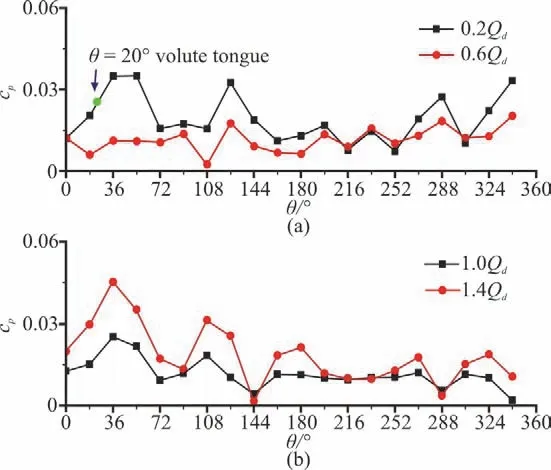
Fig.10 (Color online)Angular distributions of pressure amplitudes at BPF f under four flow rates of the pump case 1
Angular distributions of rms* of different cases are presented in Fig. 11 when the pump operates at four flow rates.From comparison,it is found that the varying trends of rms*also obey the modulated changing rule as discussed in Fig.10.At the nominal flow rate,it is evident that except the points around the volute tongue region,rms*values of case 3 are much larger than that of cases 1,2 for major measuring points.Especially for the pointsθ>180°,the difference is significant.For high flow rate of 1.4 Qd,it hasthesimilar comparison results.When the pump operates at 0.6 Qd,for almost all the measured points,rms*values of case 3 are larger than the case1,and at point =36θ °,rms*values of cases 2,3 increase significantly due to the volute tongue cut.At low flow rate of 0.2dQ ,the volute tongue cut will also lead to the rms*value increasing at most of the pointsespecially at =36θ °asobserved from case 3.From comparison,it is concluded that the volute tongue cut has a significant effect on pressure pulsation energy.
From Fig.11,it is found that pressure energy at all the concerned measuring points do not obey the consistent changing rule.To evaluate the averaged pressure energy for different points,root mean square method is proposed to deal with the twenty points on periphery of the volute casing as defined in Eq.(5).

Fig.11 (Color online)Comparison angular distributions of rms*valuesfor three pump cases


Figure 12 presents comparison oftE at various flow rates for different pumps.It is noted that the varying trends of three cases are similar,and pressure energy increases significantly at the flow rate deviating from the nominal flow rate.Especially at low flow rate 0.2dQ ,the increment is more than 50%compared with the nominal flow rate for the three pumps.For the original volute tongue,pressure energy of the case1 almost achieves minimum for all the concerned flow rates except 1.4dQ .When the volute tongue is cut to case 2,it is noted that within the flow rate of 0.6dQ to 1.2dQ ,pressure energy rises compared with the case 1.With the volute tongue further cut to case 3,pressure pulsation of the model pump is affected significantly,and for all the flow rates,pressure energy of case 3 is much larger than cases 1,2.For the engineering application,the pump usually operateswithin therange of 0.8dQ to 1.2dQ .Finally from comparison,it is found that cutting the volute tongue,namely enlarging the throat area,will lead to pressure pulsation energy increasing.So,for this type centrifugal pump with impeller and volute matched,large throat area is not reasonable considering low pressure pulsation requirement during thepump design.

Fig.12 (Color online)Comparison of tE versus flow rate of threepump cases
For quantitative analysis,theincrement ratio with respect to the original shape case 1 is calculated using Eq.(6).

Figure 13 presents the increment ratio of cases 2,3.The varying trends of cases 2,3 are identical. It is observed that the maximum increments locate around flow rate of 0.8dQ ,and it decreases with the flow rate deviating to low and high working conditions.From Table 3,it is evident that at 0.8dQ ,the increment ratio of case 3 is 38.9%,and for case 2, the increment is 19.9%.When the volute tongue is cut to case 3,for almost all the flow rates,the increment is significant.Especially within the range of 0.4dQ to 1.2dQ ,the averaged increment ratio is more than 20%.
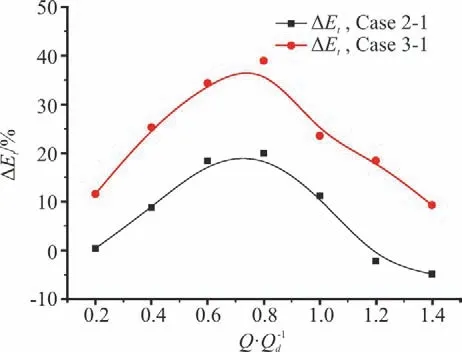
Fig.13 (Color online)Increment ratio with respect to original case 1

Table 3 Increment ratio of cases 2, 3 compared with case 1
From the above analysis,it is evident that the volute tongue cut will affect pressure pulsations of the centrifugal pump.The throat area of the pump will be increased due to the cut effect,thus the matched characteristics between the impeller and volute are changed.It will have a significant influence on flow structures within the pump,for instance the vortex shedding intensity from the blade trailing edge and flow distribution in the diffuser section.Besides,the volute tongue shape and the angle will also be changed due to the cut effect.From the previous researches,it is considered that the volute tongue,as the critical component in rotor-stator interaction,has an important effect on the upstream flow structures within the impeller and also pressure pulsations.So the combined effects will lead to pressure pulsation differing remarkably by cutting the volute tongue.However in the present research,only three different volute tongues are investigated,so the precise recommended throat area ratio range could not be concluded.It still needs further analysis to obtain the universal result appreciated for low pressure pulsation design.Besides,by cutting the volute tongue,the angle and radial gap are changed,so it will have an influence on the flow field of the pump.From the published papers[26-27],it is inferred that the flow structure at the blade outlet will be affected including the wake flow shedding from the blade and its subsequent interacting with the tongue.Besides,the flow structure in the diffuser will also be affected.At part flow rates,flow separation will occur in the diffuser,we believe that it will be affected by cutting the volute tongue[28-29].It is of great interest to clarify the influence from the flow field aspect.So,the relation between flow structures and pressure pulsation are also needed to clarify and establish the relationship between the volute tongue cut and pressure pulsation from internal flow aspect.The related researches could be carried out by PIV measurement and high precision numerical method in the future study.
3.Conclusions
In the present paper,the effect of volute tongue cut on pressure pulsations of a low specific speed centrifugal pump iscarried out and discussed.To have an understanding of the volute tongue cut on pressure pulsations at different positions,pressure signals of twenty points are measured using high response transducers.Pressure energy at the blade passing frequencyBPFf and rms*values in 0 Hz-500 Hz band are combined to investigate the cut effect.The main conclusionsareconducted asfollows:
For high flow rates,the volute tongue cut has a small effect on the pump head,and the heads of three pumps are nearly identical.At low flow rates,the volute tongue cut will lead to the pump head decreasing,and the difference is about 2%.
In pressure spectrum,discrete peaks at the blade passing frequencyBPFf and the corresponding high harmonics are captured.Cutting the volute tongue has a significant influence on the entire pressure pulsation,not only peaks atBPFf .However,for different measuring points,the effects are not identical,and it even shows an opposite varying trend.
From rms*values of all the components occurring in pressure spectrum,it is found that cutting the volute tongue has a negative effect on pressure pulsation energy for most of the measuring points,especially for the points at >180θ °,and the increment is significant.From quantitative comparison result,it is found that,for the volute tongue cut to case 3,the averaged increment ratio compared with case 1 at different flow rates is more than 20%.So cutting the volute tongue obviously affects pressure pulsations.
Finally,we expect that the obtained results may provide some suggestions considering low pressure pulsation pump design.In the further study,profound study on relationship between internal flow structure and pressure pulsation will be conducted using experimental or numerical methods.We expect to comprehensively clarify and reveal the corresponding flow structures caused by the volute tongue cut and the relation with pressure pulsations.
AcknowledgmentsThis work was supported by the Natural Science Foundation of Jiangsu Province (Grant No.BK20170547),the China Scholarship Council (CSC),the“Six Talent Peaks”in Jiangsu province (Grant No.KTHY-060)and the Open Research Subject of Key Laboratory of Fluid and Power Machinery,Ministry of Education,Xihua University (Grant No.szjj2017-096).
- 水动力学研究与进展 B辑的其它文章
- Development and application of a new random walk model to simulate the transport of degradablepollutants*
- Some notes on numerical simulation of the turbulent cavitating flow with a dynamic cubic nonlinear sub-grid scalemodel in OpenFOAM*
- Predictions of bulk velocity for open channel flow through submerged vegetation*
- On solitary wave in nonuniform shear currents *
- Fission law of solitary waves propagating over sharply variable topography *
- A TensorFlow-based new high-performance computational framework for CFD *

